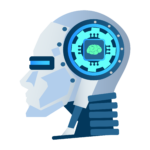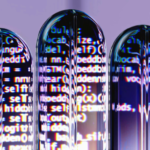
Learning the fundamentals of Data Science is like building the roots of a strong tree. The deeper your understanding, the higher and stronger your knowledge will grow. If you’re wondering where to start to master Data Science, this article is for you! In this guide, I’ll walk you through the basics of Data Science in simple terms, and show you exactly what topics to focus on to become a Data Science pro.
What Are the Fundamentals of Data Science?
Before diving into Data Science, you need to understand the basics—just like when you first learn to walk before running. The fundamentals of Data Science help you work with data, make predictions, and understand what the data is telling you. Here are the key topics every Data Scientist should learn:
- Mathematics and Statistics
- Programming Skills
- Data Wrangling and Preprocessing
- Data Visualization
- Exploratory Data Analysis (EDA)
- Machine Learning Basics
- Deep Learning Basics
- Natural Language Processing (NLP) Basics
- SQL and Data Engineering
Let’s break down these topics in simple terms with helpful learning resources for each one!
1. Mathematics and Statistics: The Building Blocks
Mathematics and statistics help you understand data better. Imagine you’re trying to solve a mystery, and you need clues (data) to find out what happened. Stats and math give you the tools to figure out what those clues mean.
Here are some basics to learn:
- Probability: Helps you understand the chances of things happening (like flipping a coin).
- Linear Algebra: Deals with vectors and matrices (think of them as tables of numbers).
- Calculus: Helps you understand how things change, like speed or growth.
- Statistics: Helps you test ideas (like “Are these two things related?”).
Learning Resources:
- Khan Academy’s Math Courses: Free and easy-to-follow math courses.
- Mathematics for Machine Learning: A course on Coursera to learn math for data science.
- Introduction to Probability – MIT OpenCourseWare: A free course on probability and statistics.
2. Programming Skills: Coding Your Ideas
To be a Data Scientist, you need to know how to talk to computers. That’s where programming comes in. Python is one of the most popular languages for Data Science because it’s easy to learn and powerful.
Important skills to learn:
- Basic coding concepts like variables, loops, and conditions.
- Libraries like Pandas for handling data and Matplotlib for making graphs.
- Understanding Object-Oriented Programming (OOP) to organize your code.
Learning Resources:
- Python for Everybody (Coursera): A beginner-friendly Python course.
- Real Python: A website full of Python tutorials and guides.
- Introduction to Data Science with Python (EdX): A free course for learning Python for Data Science.
3. Data Wrangling and Preprocessing: Cleaning the Mess
Imagine you’re given a messy room full of toys. Before you can start playing, you need to clean it up. Data Wrangling is like cleaning up the messy data. You’ll need to remove missing values, fix errors, and organize everything.
Important things to learn:
- Handling missing data (What do you do if you have gaps in your data?)
- Scaling and normalizing data (making everything fit into the same range).
- Feature Engineering: Creating new data features that make the model smarter.
Learning Resources:
- Data Wrangling with Python (Coursera): A course that teaches how to clean and prepare data.
- Pandas Documentation: Official docs for learning how to manipulate data with Python.
- Data Cleaning Tutorial on Kaggle: Hands-on exercises for cleaning real-world data.
4. Data Visualization: Telling Stories with Graphs
Data doesn’t always make sense on its own. That’s why you need visualizations—like graphs and charts—to help you see the patterns and trends.
You’ll need to learn:
- Simple charts like bar charts and line graphs.
- Advanced visualizations like heatmaps and scatter plots to show more complex data.
- How to use tools like Matplotlib and Seaborn for creating visuals.
Learning Resources:
- Matplotlib Tutorials: Official guide for learning Matplotlib.
- Seaborn Documentation: Learn how to make beautiful statistical plots with Seaborn.
- Data Visualization with Python (Coursera): A course for beginners to master data visualization in Python.
5. Exploratory Data Analysis (EDA): Digging Deeper into Data
EDA is like being a detective. Once you have your data cleaned up, it’s time to explore it and look for patterns. This helps you understand the data before making predictions.
What to learn:
- Descriptive statistics: Basic numbers like averages, medians, and ranges.
- Correlation: Finding out if one thing affects another (like, does studying more lead to better grades?).
- Data profiling: Checking the quality and completeness of your data.
Learning Resources:
- Exploratory Data Analysis with Python (Coursera): A great course on performing EDA with Python.
- Kaggle: Titanic Dataset EDA: Practice your EDA skills with this famous dataset.
- Pandas for Data Analysis: Learn how to use Pandas for exploring and analyzing data.
6. Machine Learning Basics: Teaching Computers to Learn
Machine learning is where Data Science really starts to shine. It’s like teaching a robot to recognize patterns in data and make decisions.
Key concepts to learn:
- Supervised Learning: Teaching the computer with labeled data (like telling it “this is a cat, this is a dog”).
- Unsupervised Learning: Letting the computer find its own patterns in the data.
- Model Evaluation: Checking how well the computer learned (like testing a student’s exam).
Learning Resources:
- Machine Learning by Andrew Ng (Coursera): A famous course by Stanford that covers all the basics of ML.
- Kaggle’s Machine Learning Courses: Hands-on lessons and challenges for learning machine learning.
- Scikit-learn Documentation: Learn how to implement machine learning algorithms in Python.
7. Deep Learning Basics: Advanced Machine Learning
Deep learning is a special type of machine learning that uses neural networks. These are like the brain of the computer, and they help solve very complex problems like recognizing faces or understanding language.
You’ll need to learn:
- Neural Networks: How computers mimic the brain.
- Convolutional Neural Networks (CNNs): Good for image recognition.
- Recurrent Neural Networks (RNNs): Great for text and time-related data.
Learning Resources:
- Deep Learning Specialization (Coursera): A complete course on deep learning by Andrew Ng.
- Fast.ai Deep Learning Course: A free course to learn deep learning using practical examples.
- Deep Learning with Python (Book): A popular book to learn deep learning concepts with Python.
8. Natural Language Processing (NLP) Basics: Teaching Computers to Understand Words
NLP is the magic that lets computers understand human language, like reading text and figuring out if it’s positive or negative (like happy or sad).
What to learn:
- Text Processing: Breaking down words, removing unnecessary parts (like punctuation).
- Language Models: Teaching the computer to understand words and sentences (like predicting the next word in a sentence).
Learning Resources:
- Hands-On Natural Language Processing with Python (Book): A practical guide to NLP with Python.
- NLP Specialization (Coursera): A complete course on NLP techniques.
- Hugging Face NLP Course: Free course on using NLP models in real-world applications.
9. SQL and Data Engineering: Getting Data from Databases
SQL is a language that helps you talk to databases (where most of the data lives). Data engineering is about making sure data flows smoothly from one place to another.
You should know:
- SQL: How to ask databases for data using commands like SELECT, JOIN, and WHERE.
- Data Pipelines: How to move data from one place to another automatically.
Learning Resources:
- SQL for Data Science (Coursera): A beginner’s course to learn SQL.
- Data Engineering with Google Cloud (Coursera): Learn how to work with data pipelines and cloud-based data engineering.
- SQLZoo: An interactive website for learning SQL.





